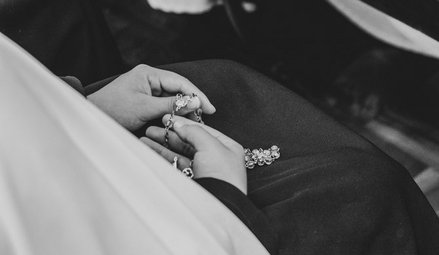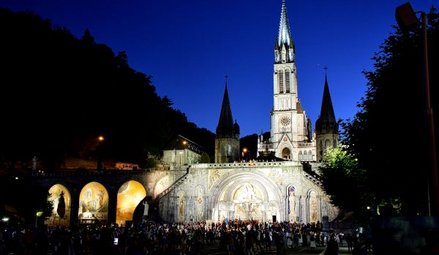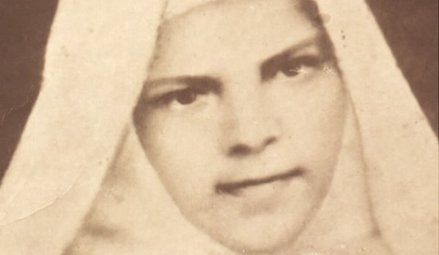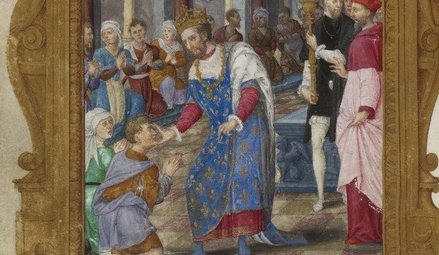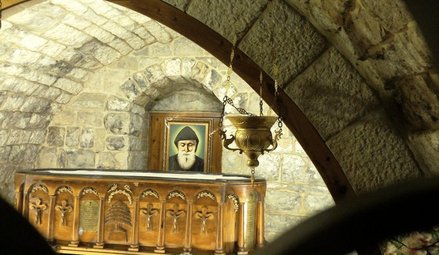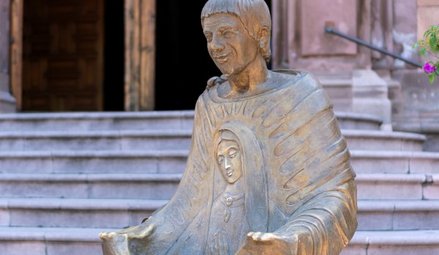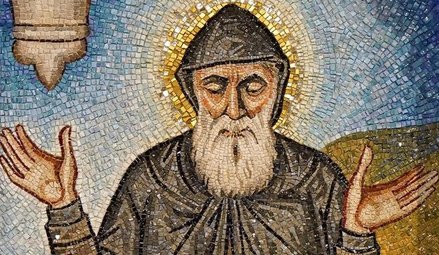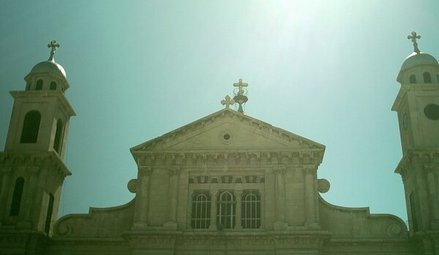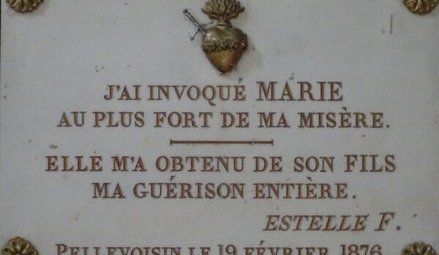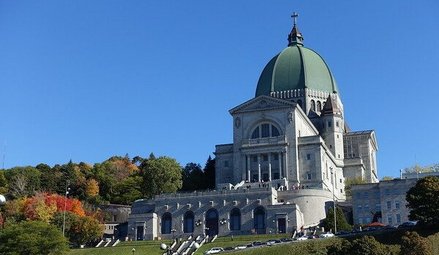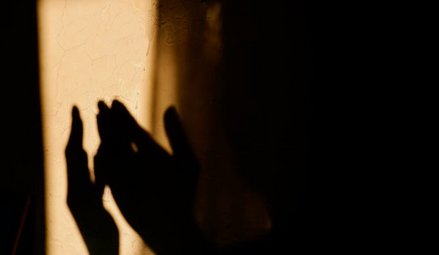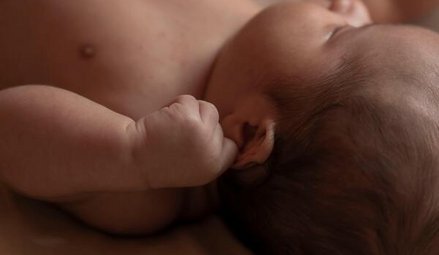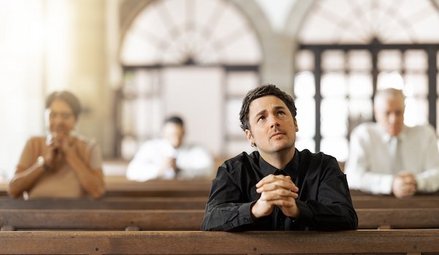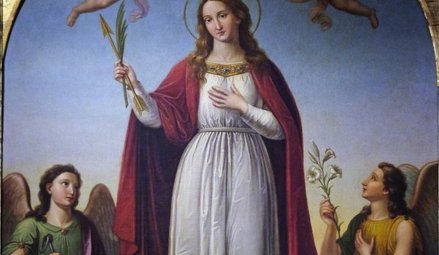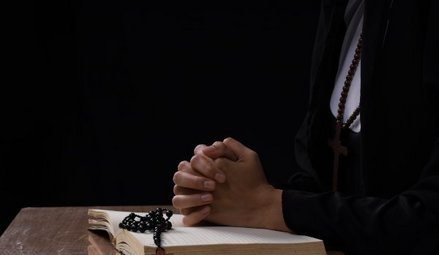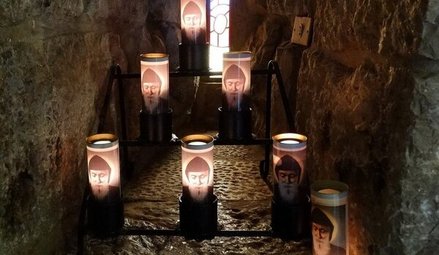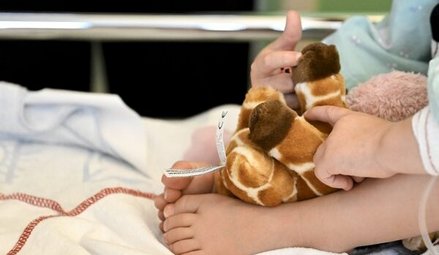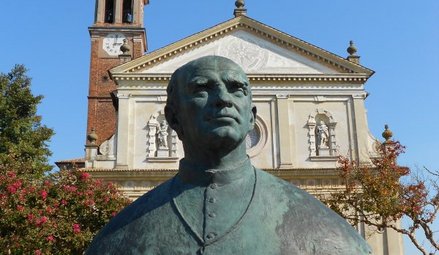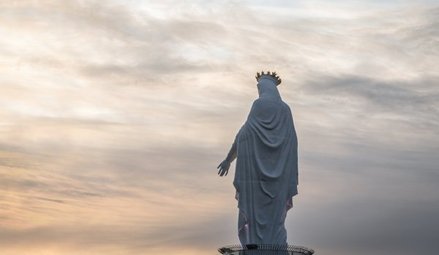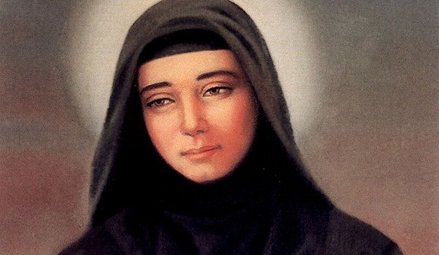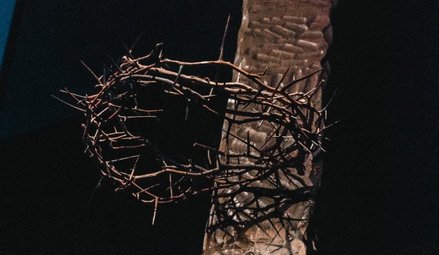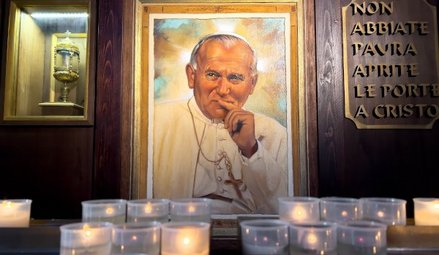- By theme
- Jesus
- The many proofs of Christ’s resurrection
- Saint Thomas Aquinas: God gave all the divine proofs we needed to believe
- The surpassing power of Christ's word
- Lewis’s trilemma: a proof of Jesus’s divinity
- God saves: the power of the holy name of Jesus
- Jesus spoke and acted as God's equal
- Jesus' divinity is actually implied in the Koran
- Jesus came at the perfect time of history
- Rabbinical sources testify to Jesus' miracles
- Mary
- The Church
- The Bible
- An enduring prophecy and a series of miraculous events preventing the reconstruction of the Temple
- The authors of the Gospels were either eyewitnesses or close contacts of those eyewitnesses
- Onomastics support the historical reliability of the Gospels
- The New Testament was not altered
- The New Testament is the best-attested manuscript of Antiquity
- The Gospels were written too early after the facts to be legends
- Archaeological finds confirm the reliability of the New Testament
- The criterion of embarrassment proves that the Gospels tell the truth
- The dissimilarity criterion strengthens the case for the historical reliability of the Gospels
- 84 details in Acts verified by historical and archaeological sources
- The unique prophecies that announced the Messiah
- The time of the coming of the Messiah was accurately prophesied
- The prophet Isaiah's ultra accurate description of the Messiah's sufferings
- Daniel's "Son of Man" is a portrait of Christ
- The Apostles
- Saint Peter, prince of the apostles
- Saint John the Apostle: an Evangelist and Theologian who deserves to be better known (d. 100)
- Saint Matthew, apostle, evangelist and martyr (d. 61)
- James the Just, “brother” of the Lord, apostle and martyr (d. 62 AD)
- Saint Matthias replaces Judas as an apostle (d. 63)
- The martyrs
- The protomartyr Saint Stephen (d. 31)
- Polycarp, bishop of Smyrna, disciple of John and martyr (d. 155)
- Saint Blandina and the Martyrs of Lyon: the fortitude of faith (177 AD)
- Saint Agatha stops a volcano from destroying the city of Catania (d. 251)
- Saint Lucy of Syracuse, virgin and martyr for Christ (d. 304)
- Thomas More: “The king’s good servant, but God’s first”
- The martyrdom of Paul Miki and his companions (d. 1597)
- The martyrs of Angers and Avrillé (1794)
- The Martyrs of Compiègne (1794)
- The Vietnamese martyrs Father Andrew Dung-Lac and his 116 companions (17th-19th centuries)
- He braved torture to atone for his apostasy (d. 1818)
- Blaise Marmoiton: the epic journey of a missionary to New Caledonia (d. 1847)
- José Luis Sanchez del Rio, martyred at age 14 for Christ the King (d. 1928)
- Saint Maximilian Kolbe, Knight of the Immaculate (d. 1941)
- The monks
- The Desert Fathers (3rd century)
- Saint Anthony of the Desert, a father of monasticism (d. 356)
- Saint Benedict, father of Western monasticism (d. 550)
- Saint Bruno the Carthusian (d.1101): the miracle of a hidden life
- Blessed Angelo Agostini Mazzinghi: the Carmelite with flowers pouring from his mouth (d. 1438)
- Monk Abel of Valaam's accurate prophecies about Russia (d. 1841)
- The more than 33,000 miracles of Saint Charbel Maklouf (d. 1898)
- Saint Pio of Pietrelcina (d. 1968): How God worked wonders through "a poor brother who prays"
- The surprising death of Father Emmanuel de Floris (d. 1992)
- The prophecies of Saint Paisios of Mount Athos (d. 1994)
- The saints
- Saints Anne and Joachim, parents of the Virgin Mary (19 BC)
- Saint Nazarius, apostle and martyr (d. 68 or 70)
- Ignatius of Antioch: successor of the apostles and witness to the Gospel (d. 117)
- Saint Gregory the Miracle-Worker (d. 270)
- Saint Martin of Tours: patron saint of France, father of monasticism in Gaul, and the first great leader of Western monasticism (d. 397)
- Saint Lupus, the bishop who saved his city from the Huns (d. 623)
- Saint Dominic of Guzman (d.1221): an athlete of the faith
- Saint Francis, the poor man of Assisi (d. 1226)
- Saint Anthony of Padua: "everyone’s saint"
- Saint Rose of Viterbo or How prayer can transform the world (d. 1252)
- Saint Simon Stock receives the scapular of Mount Carmel from the hands of the Virgin Mary
- The unusual boat of Saint Basil of Ryazan
- Saint Agnes of Montepulciano's complete God-confidence (d. 1317)
- The extraordinary conversion of Michelina of Pesaro
- Saint Peter Thomas (d. 1366): a steadfast trust in the Virgin Mary
- Saint Rita of Cascia: hoping against all hope
- Saint Catherine of Genoa and the Fire of God's love (d. 1510)
- Saint Anthony Mary Zaccaria, physician of bodies and souls (d. 1539)
- Saint Ignatius of Loyola (d. 1556): "For the greater glory of God"
- Brother Alphonsus Rodríguez, SJ: the "holy porter" (d. 1617)
- Martin de Porres returns to speed up his beatification (d. 1639)
- Virginia Centurione Bracelli: When God is the only goal, all difficulties are overcome (d.1651)
- Saint Marie of the Incarnation, "the Teresa of New France" (d.1672)
- St. Francis di Girolamo's gift of reading hearts and souls (d. 1716)
- Rosa Venerini: moving in the ocean of the Will of God (d. 1728)
- Seraphim of Sarov (1759-1833): the purpose of the Christian life is to acquire the Holy Spirit
- Camille de Soyécourt, filled with divine fortitude (d. 1849)
- Bernadette Soubirous, the shepherdess who saw the Virgin Mary (1858)
- Saint John Vianney (d. 1859): the global fame of a humble village priest
- Gabriel of Our Lady of Sorrows, the "Gardener of the Blessed Virgin" (d. 1862)
- Father Gerin, the holy priest of Grenoble (1863)
- Blessed Francisco Palau y Quer: a lover of the Church (d. 1872)
- Saints Louis and Zelie Martin, the parents of Saint Therese of Lisieux (d. 1894 and 1877)
- The supernatural maturity of Francisco Marto, “contemplative consoler of God” (d. 1919)
- Saint Faustina, apostle of the Divine Mercy (d. 1938)
- Brother Marcel Van (d.19659): a "star has risen in the East"
- Doctors
- The mystics
- Lutgardis of Tongeren and the devotion to the Sacred Heart
- Saint Angela of Foligno (d. 1309) and "Lady Poverty"
- Saint John of the Cross: mystic, reformer, poet, and universal psychologist (+1591)
- Blessed Anne of Jesus: a Carmelite nun with mystical gifts (d.1621)
- Catherine Daniélou: a mystical bride of Christ in Brittany
- Saint Margaret Mary sees the "Heart that so loved mankind"
- Mother Yvonne-Aimée of Jesus' predictions concerning the Second World War (1922)
- Sister Josefa Menendez, apostle of divine mercy (d. 1923)
- Edith Royer (d. 1924) and the Sacred Heart Basilica of Montmartre
- Rozalia Celak, a mystic with a very special mission (d. 1944)
- Visionaries
- Saint Perpetua delivers her brother from Purgatory (203)
- María de Jesús de Ágreda, abbess and friend of the King of Spain
- Discovery of the Virgin Mary's house in Ephesus (1891)
- Sister Benigna Consolata: the "Little Secretary of Merciful Love" (d. 1916)
- Maria Valtorta's visions match data from the Israel Meteorological Service (1943)
- Berthe Petit's prophecies about the two world wars (d. 1943)
- Maria Valtorta saw only one pyramid at Giza in her visions... and she was right! (1944)
- The 700 extraordinary visions of the Gospel received by Maria Valtorta (d. 1961)
- The amazing geological accuracy of Maria Valtorta's writings (d. 1961)
- Maria Valtorta's astronomic observations consistent with her dating system
- Discovery of an ancient princely house in Jerusalem, previously revealed to a mystic (d. 1961)
- The popes
- The great witnesses of the faith
- Saint Augustine's conversion: "Why not this very hour make an end to my uncleanness?" (386)
- Thomas Cajetan (d. 1534): a life in service of the truth
- Madame Acarie, "the servant of the servants of God" (d. 1618)
- Blaise Pascal (d.1662): Biblical prophecies are evidence
- Madame Élisabeth and the sweet smell of virtue (d. 1794)
- Jacinta, 10, offers her suffering to save souls from hell (d. 1920)
- Father Jean-Édouard Lamy: "another Curé of Ars" (d. 1931)
- Christian civilisation
- The depth of Christian spirituality
- John of the Cross' Path to perfect union with God based on his own experience
- The dogma of the Trinity: an increasingly better understood truth
- The incoherent arguments against Christianity
- The "New Pentecost": modern day, spectacular outpouring of the Holy Spirit
- The Christian faith explains the diversity of religions
- Cardinal Pierre de Bérulle (d.1629) on the mystery of the Incarnation
- Christ's interventions in history
- Marian apparitions and interventions
- The Life-giving Font of Constantinople
- Our Lady of Virtues saves the city of Rennes in Bretagne (1357)
- Mary stops the plague epidemic at Mount Berico (1426)
- Our Lady of Miracles heals a paralytic in Saronno (1460)
- Cotignac: the first apparitions of the Modern Era (1519)
- Savona: supernatural origin of the devotion to Our Lady of Mercy (1536)
- The Virgin Mary delivers besieged Christians in Cusco, Peru
- The victory of Lepanto and the feast of Our Lady of the Rosary (1571)
- The apparitions to Brother Fiacre (1637)
- The “aldermen's vow”, or the Marian devotion of the people of Lyon (1643)
- Our Lady of Nazareth in Plancoët, Brittany (1644)
- Our Lady of Laghet (1652)
- Saint Joseph’s apparitions in Cotignac, France (1660)
- Heaven confides in a shepherdess of Le Laus (1664-1718)
- Zeitoun, a two-year miracle (1968-1970)
- The Holy Name of Mary and the major victory of Vienna (1683)
- Heaven and earth meet in Colombia: the Las Lajas shrine (1754)
- The five Marian apparitions that traced an "M" over France, and its new pilgrimage route
- A series of Marian apparitions and prophetic messages in Ukraine since the 19th century (1806)
- "Consecrate your parish to the Immaculate Heart of Mary" (1836)
- At La Salette, Mary wept in front of the shepherds (1846)
- Our Lady of Champion, Wisconsin: the first and only approved apparition of Mary in the US (1859)
- Gietrzwald apparitions: heavenly help to a persecuted minority
- The silent apparition of Knock Mhuire in Ireland (1879)
- Mary "Abandoned Mother" appears in a working-class district of Lyon, France (1882)
- The thirty-three apparitions of the Virgin Mary in Beauraing (1932)
- "Our Lady of the Poor" appears eight times in Banneux (1933)
- Fontanelle-Montichiari apparitions of Our Lady "Rosa Mystica" (1947)
- Mary responds to the Vows of the Polish Nation (1956)
- Zeitoun apparitions
- The Virgin Mary comes to France's rescue by appearing at L'Ile Bouchard (1947)
- Maria Esperanza Bianchini and Mary, Mary, Reconciler of Peoples and Nations (1976)
- Luz Amparo and the El Escorial apparitions
- The extraordinary apparitions of Medjugorje and their worldwide impact
- The Virgin Mary prophesied the 1994 Rwandan genocide (1981)
- Our Lady of Soufanieh's apparition and messages to Myrna Nazzour (1982)
- The Virgin Mary heals a teenager, then appears to him dozens of times (1986)
- Seuca, Romania: apparitions and pleas of the Virgin Mary, "Queen of Light" (1995)
- Angels and their manifestations
- Mont Saint-Michel: Heaven watching over France
- Angels give a supernatural belt to the chaste Thomas Aquinas (1243)
- The constant presence of demons and angels in the life of St Frances of Rome (d. 1440)
- Mother Yvonne-Aimée escapes from prison with the help of an angel (1943)
- Saved by Angels: The Miracle on Highway 6 (2008)
- Exorcisms in the name of Christ
- A wave of charity unique in the world
- Saint Peter Nolasco: a life dedicated to ransoming enslaved Christians (d. 1245)
- Saint Angela Merici: Christ came to serve, not to be served (d. 1540)
- Saint John of God: a life dedicated to the care of the poor, sick and those with mental disorders (d. 1550)
- Saint Camillus de Lellis, reformer of hospital care (c. 1560)
- Blessed Alix Le Clerc, encouraged by the Virgin Mary to found schools (d. 1622)
- Saint Vincent de Paul (d. 1660), apostle of charity
- Marguerite Bourgeoys, Montreal's first teacher (d. 1700)
- Frédéric Ozanam, inventor of the Church's social doctrine (d. 1853)
- Damian of Molokai: a leper for Christ (d. 1889)
- Pier Giorgio Frassati (d.1925): heroic charity
- Saint Dulce of the Poor, the Good Angel of Bahia (d. 1992)
- Mother Teresa of Calcutta (d. 1997): an unshakeable faith
- Heidi Baker: Bringing God's love to the poor and forgotten of the world
- Amazing miracles
- The miracle of liquefaction of the blood of St. Januarius (d. 431)
- The miracles of Saint Anthony of Padua (d. 1231)
- Saint Pius V and the miracle of the Crucifix (1565)
- Saint Philip Neri calls a teenager back to life (1583)
- The resurrection of Jérôme Genin (1623)
- Saint Francis de Sales brings back to life a victim of drowning (1623)
- Saint John Bosco and the promise kept beyond the grave (1839)
- The day the sun danced at Fatima (1917)
- Pius XII and the miracle of the sun at the Vatican (1950)
- When Blessed Charles de Foucauld saved a young carpenter named Charle (2016)
- Reinhard Bonnke: 89 million conversions (d. 2019)
- Miraculous cures
- The royal touch: the divine thaumaturgic gift granted to French and English monarchs (11th-19th centuries)
- With 7,500 cases of unexplained cures, Lourdes is unique in the world (1858-today)
- Our Lady at Pellevoisin: "I am all merciful" (1876)
- Mariam, the "little thing of Jesus": a saint from East to West (d.1878)
- Gemma Galgani: healed to atone for sinners' faults (d. 1903)
- The miraculous cure of Blessed Maria Giuseppina Catanea
- The extraordinary healing of Alice Benlian in the Church of the Holy Cross in Damascus (1983)
- The approved miracle for the canonization of Juan Diego Cuauhtlatoatzin (1990)
- Healed by St Charbel Makhlouf, her scars bleed each month for the benefit of unbelievers (1993)
- The miracle that led to Brother André's canonisation (1999)
- Bruce Van Natta's intestinal regrowth: an irrefutable miracle (2007)
- He had “zero” chance of living: a baby's miraculous recovery (2015)
- Manouchak, operated on by Saint Charbel (2016)
- How Maya was cured from cancer at Saint Charbel's tomb (2018)
- Preserved bodies of the saints
- Dying in the odour of sanctity
- The body of Saint Cecilia found incorrupt (d. 230)
- Stanislaus Kostka's burning love for God (d. 1568)
- Blessed Antonio Franco, bishop and defender of the poor (d. 1626)
- The incorrupt body of Marie-Louise Nerbollier, the visionary from Diémoz (d. 1910)
- The great exhumation of Saint Charbel (1950)
- Bilocations
- Inedias
- Levitations
- Lacrimations and miraculous images
- Saint Juan Diego's tilma (1531)
- The Rue du Bac apparitions of the Virgin Mary to St. Catherine Labouré (Paris, 1830)
- Mary weeps in Syracuse (1953)
- Teresa Musco (d.1976): salvation through the Cross
- Soufanieh: A flow of oil from an image of the Virgin Mary, and oozing of oil from the face and hands of Myrna Nazzour (1982)
- The Saidnaya icon exudes a wonderful fragrance (1988)
- Our Lady weeps in a bishop's hands (1995)
- Stigmates
- The venerable Lukarda of Oberweimar shares her spiritual riches with her convent (d. 1309)
- Blessed Maria Grazia Tarallo, mystic and stigmatist (d. 1912)
- Saint Padre Pio: crucified by Love (1918)
- Elena Aiello: "a Eucharistic soul"
- A Holy Triduum with a Syrian mystic, witnessing the sufferings of Christ (1987)
- A Holy Thursday in Soufanieh (2004)
- Eucharistic miracles
- Lanciano: the first and possibly the greatest Eucharistic miracle (750)
- A host came to her: 11-year-old Imelda received Communion and died in ecstasy (1333)
- Faverney's hosts miraculously saved from fire
- A tsunami recedes before the Blessed Sacrament (1906)
- Buenos Aires miraculous host sent to forensic lab, found to be heart muscle (1996)
- Relics
- The Veil of Veronica, known as the Manoppello Image
- For centuries, the Shroud of Turin was the only negative image in the world
- The Holy Tunic of Argenteuil's fascinating history
- Saint Louis (d. 1270) and the relics of the Passion
- The miraculous rescue of the Shroud of Turin (1997)
- A comparative study of the blood present in Christ's relics
- Jews discover the Messiah
- Francis Xavier Samson Libermann, Jewish convert to Catholicism (1824)
- Our Lady of the Miraculous Medal and the conversion of Alphonse Ratisbonne (1842)
- Max Jacob: a liberal gay Jewish artist converts to Catholicism (1909)
- Edith Stein - Saint Benedicta of the Cross: "A daughter of Israel who, during the Nazi persecutions, remained united with faith and love to the Crucified Lord, Jesus Christ, as a Catholic, and to her people as a Jew"
- Patrick Elcabache: a Jew discovers the Messiah after his mother is miraculously cured in the name of Jesus
- Cardinal Aron Jean-Marie Lustiger (d. 2007): Chosen by God
- Muslim conversions
- Buddhist conversions
- Atheist conversions
- The conversion of an executioner during the Terror (1830)
- God woos a poet's heart: the story of Paul Claudel's conversion (1886)
- Dazzled by God: Madeleine Delbrêl's story (1924)
- C.S. Lewis, the reluctant convert (1931)
- The day André Frossard met Christ in Paris (1935)
- MC Solaar's rapper converts after experiencing Jesus' pains on the cross
- Father Sébastien Brière, converted at Medjugorje (2003)
- Franca Sozzani, the "Pope of fashion" who wanted to meet the Pope (2016)
- Nelly Gillant: from Reiki Master to Disciple of Christ (2018)
- Testimonies of encounters with Christ
- Near-death experiences (NDEs) confirm Catholic doctrine on the Four Last Things
- The NDE of Saint Christina the Astonishing, a source of conversion to Christ (1170)
- Jesus audibly calls Alphonsus Liguori to follow him (1723)
- Blessed Dina Bélanger (d. 1929): loving God and letting Jesus and Mary do their job
- Gabrielle Bossis: He and I
- André Levet's conversion in prison
- Journey between heaven and hell: a "near-death experience" (1971)
- Alicja Lenczewska: conversations with Jesus (1985)
- Vassula Ryden and the "True Life in God" (1985)
- Nahed Mahmoud Metwalli: from persecutor to persecuted (1987)
- The Bible verse that converted a young Algerian named Elie (2000)
- Invited to the celestial court: the story of Chantal (2017)
- Providential stories
- The superhuman intuition of Saint Pachomius the Great
- Germanus of Auxerre's prophecy about Saint Genevieve's future mission, and protection of the young woman (446)
- Seven golden stars reveal the future location of the Grande Chartreuse Monastery (1132)
- The supernatural reconciliation of the Duke of Aquitaine (1134)
- Saint Zita and the miracle of the cloak (13th c.)
- Joan of Arc: "the most beautiful story in the world"
- John of Capistrano saves the Church and Europe (1456)
- A celestial music comforts Elisabetta Picenardi on her deathbed (d. 1468)
- Gury of Kazan: freed from his prison by a "great light" (1520)
- The strange adventure of Yves Nicolazic (1623)
- Julien Maunoir miraculously learns Breton (1626)
- Pierre de Keriolet: with Mary, one cannot be lost (1636)
- How Korea evangelized itself (18th century)
- A hundred years before it happened, Saint Andrew Bobola predicted that Poland would be back on the map (1819)
- The prophetic poem about John Paul II (1840)
- Don Bosco's angel dog: Grigio (1854)
- Thérèse of Lisieux saved countless soldiers during the Great War
- Lost for over a century, a Russian icon reappears (1930)
- In 1947, a rosary crusade liberated Austria from the Soviets (1946-1955)
- The discovery of the tomb of Saint Peter in Rome (1949)
- He should have died of hypothermia in Soviet jails (1972)
- God protects a secret agent (1975)
- Flowing lava stops at church doors (1977)
- A protective hand saved John Paul II and led to happy consequences (1981)
- Mary Undoer of Knots: Pope Francis' gift to the world (1986)
- Edmond Fricoteaux's providential discovery of the statue of Our Lady of France (1988)
- The Virgin Mary frees a Vietnamese bishop from prison (1988)
- The miracles of Saint Juliana of Nicomedia (1994)
- Global launch of "Pilgrim Virgins" was made possible by God's Providence (1996)
- The providential finding of the Mary of Nazareth International Center's future site (2000)
- Syrian Monastery shielded from danger multiple times (2011-2020)
- Jesus
- Who are we?
- Make a donation
TOUTES LES RAISONS DE CROIRE
Guérisons miraculeuses
n°249
Pellevoisin (Indre department, France)
14 February to 8 December 1876
Our Lady at Pellevoisin: "I am all merciful"
Estelle Faguette, a thirty-three-year-old maid, was seriously ill. She wrote a prayer to the Virgin Mary, asking to be cured. Mary appeared to her in her bedroom on 14 February 1876: Estelle was miraculously healed a few days later and continued to see the Virgin, "Mother of all mercies", on several occasions that year. Mary entrusted her with the mission of spreading the scapular of the Sacred Heart, giving new impetus to the devotion to the Sacred Heart, which St Margaret Mary Alacoque had already promoted in the 17th century.
Les raisons d'y croire :
- It is strictly impossible to associate Estelle's pathology (severe lung lesions) with a psychosomatic illness.
After examining Estelle, who was suffering from chronic peritonitis that had degenerated into tuberculosis, Dr Bucquoy, a professor of medicine, thought that she had no chance of recovery. A few hours before the apparition, Estelle was at her worst, "no longer seeing, no longer eating, 'as if dead'". However, she was cured on the night of 18 to 19 February 1876, which is scientifically inexplicable.
The commission of enquiry set up on 13 January 1877 into the visionary's unexplained cure issued a positive report on all points.
Estelle was healed precisely on the day prophesied by the apparition, 14 February 1876: "You will suffer five more days, in honour of the five wounds of my Son". Insofar as Estelle's illness was not feigned and would in all probability end in her death, it is impossible for Estelle to have known of her own intelligence if and when she would recover, unless it had been revealed to her supernaturally.
- Estelle had no inclination toward fame, adulation, or media hype. She led a life of great discretion, kept her job as a maid and showed constant humility and obedience until her death. Her apparitions were not motivated by a need for recognition.
- Some people believe that the apparitions were due to Estelle's failing health. However, there is nothing in these apparitions to suggest that they were hallucinations: their duration (much longer than such psychotic episodes would be), the clarity of the messages, Mary's physiognomy (clothing details and the subtlety of the successive expressions on her face), the visionary's inner peace, the interactions between Estelle and the apparition (a real dialogue between two people, perfectly clear linguistically), the respect of the laws of optics (the size of the apparition varied according to whether it was moving away from or towards Estelle), etc.
- All the messages from the Virgin collected by Estelle are absolutely in accordance with the teaching of the Catholic Church: they cannot be the fruit of a fanciful mind. The devotion of the scapular has been well known in the Christian world since the 13th century (Carmel).
- What's more, a prophetic vision of Estelle's came true: on 6 February 1878, in ecstasy, she saw Archbishop Luigi Pecci of Perugia, dressed in white, to whom she handed a scapular similar to the one the Virgin was holding during the fifteenth apparition. Thirteen days later, Archbishop Pecci ascended the throne of Saint Peter as Leo XIII and, on 17 February 1900, he received Estelle in private audience. The Virgin Mary had also announced during her apparitions in 1876 that Estelle, a humble servant, would one day meet the Pope in person.
- The fruits of the Marian shrine at Pellevoisin are very significant: conversions, religious and priestly vocations, large numbers of confessions, healings, and so on.
- For almost 150 years, nothing has ever interrupted pilgrimages to the shrine of Pellevoisin: neither wars, nor economic and social crises, nor the vagaries of public life, nor any decision by the episcopal authorities.
- Although the Church has not yet formally and canonically ruled on the authenticity of these apparitions (the procedure is still pending), devotion to Our Lady of Pellevoisin is widely encouraged. Since 1876, the Church's support has been clear: the supernatural nature of Estelle's healing was recognised (in 1983, by the archbishop of Bourges Paul Vignancour); the development of the shrine and pilgrimage was encouraged; the scapular of Pellevoisin was approved by decree (by the Congregation of Rites, in 1900); and Estelle's cause for beatification was opened in 2020.
Synthèse :
Estelle Faguette, born in 1843 in Saint-Memmie, near Châlons-sur-Marne, France, became a servant in the household of Countess Marie-Luce de La Rochefoucauld-Montbel, in Pellevoisin, when a bad fall forced her to leave the novitiate of the Augustinian Sisters of Notre-Dame de Paris and give up religious life. Since 1875, however, she had been suffering from chronic peritonitis, which was poorly treated and consequently turned into tuberculosis. In February 1876, Estelle had been bedridden for several days and was in a great deal of pain.
Around midnight on 14 February, the Virgin Mary appeared to her. "I was trying to rest when suddenly the devil appeared at the foot of my bed. Oh, how frightened I was! He was horrible, he made faces at me; no sooner had he arrived than the Blessed Virgin appeared on the other side." So begins Estelle's story. The young woman, of very modest origins and the daughter of a bankrupted businessman, had never before reported the slightest extraordinary experienced. She led a secluded existence, far removed from the world, which she avoided like the plague. The presence of the grimacing being may seem anecdotal, or a figment of the imagination. In reality, it reveals the spiritual battle being waged around the sick woman, who had been told by a few people that her illness was terminal. Beyond the symbolic reference to the devil, and its figurative aspect, this evil spirit conveys the importance of the moment Estelle was living through, on the threshold of death.
The description she gave of the Mother of God is as follows: "She had a very white woollen veil that formed three folds; her features were regular, her complexion white and pink, rather a little pale." A dialogue then began between Estelle and the apparition: "Have no fear, you know you are my daughter. Courage, be patient, my Son will let himself be touched. You will suffer for five more days, in honour of the five wounds of my Son. On Saturday, you will either be dead or healed." The initiative came from the apparition, establishing contact between the humble young woman and Heaven, just as God so often takes the initiative to call people in the Bible. Mary soothed Estelle, removing the fear caused by the presence of the devil, a troublemaker and a source of unease, which vanished with the mere presence of the Virgin Mary, as confirmed by Christian tradition. In the weeks that followed, the apparition repeated: "I am all mercy".
The allusion to the five wounds of Christ was not an invention of the visionary: it is a devotion practised since at least the 11th century (Saint Peter Damian, d. 1072). Expressed in this way, it is impossible that Estelle, whose religious knowledge was very limited, could have invented such a formula.
Fourteen other apparitions followed one another until 8 December 1876, in the same place, namely Estelle's bedroom. On the night of 18 to 19 February (fifth apparition), when she was thought to be on the point of death, Estelle was miraculously cured of her tubercular lung lesions.
On 9 September (ninth apparition), Mary showed her "red heart" (cf. the devotion to the Immaculate Heart of Mary, practiced the Church since Saint Bernard of Clairvaux and the private revelations made to great mystics, such as Saint Gertrude of Helfta at the end of the 13th century). The following messages evoke the difficulties encountered by believers in France during the Third Republic, where positivism and materialism sometimes reigned supreme.
On 8 December 1876, the day of the fifteenth and last apparition, the Virgin asked Estelle to wear the scapular she had shown her: "I have chosen you to spread my glory and to spread this devotion; you yourself will go to the prelate and present him with the model of the scapular [...]. Nothing would please me more than to see this livery on each of my children, and that they will all apply themselves to repairing the outrages that my Son receives in the sacrament of his love." "Show it to the Pope?" the humble maid naturally wondered. She knew neither Rome nor even the rest of France... In fact, she did bring the scapular to Leo XIII when they met in private audience 24 years later.
From 11 April 1876, Father Salmon, Estelle's spiritual director, informed the diocesan clergy of the successive apparitions. The ball was rolling. The news quickly reached the ears of the Archbishop of Bourges, Charles-Amable de La Tour d'Auvergne. Father Salmon was authorised to speak about the events from the pulpit. The following month, the archbishop wrote that he had no problem with the words of the apparition being written on a sign ("I am all merciful), which would be placed above the statue of Our Lady of the Sacred Heart, in the church at Pellevoisin, and that Estelle's room should be transformed into a "little oratory", as it was there that the visionary was cured, having announced the date of this miracle in advance (on the night of 18 to 19 February, i.e. effectively five days after the previous apparition which had specified the moment: "You will suffer another five days"). This marked the beginning of the shrine at Pellevoisin and the pilgrimage that went with it.
On 13 January 1877, a commission of enquiry was set up to investigate Estelle's sudden recovery. Its conclusions were all favourable, as was Pope Pius IX's reaction to the proposed confraternity in honour of Our Lady of Pellevoisin. The confraternity was instituted on 28 July 1878 and raised to archconfraternity status in 1894 by Pope Leo XIII. From the outset, the papacy and bishops supported the devotion to the scapular of Pellevoisin.
On 6 February 1878, the day before the death of Pope Pius IX, Estelle had a prophetic vision: she saw the future pope (a "bishop dressed in white") in the guise of Pius IX's successor, who would be elected thirteen days later and ascend the throne of Saint Peter under the name of Leo XIII. The pontiff received Estelle in private audience on 17 February 1900.
On 4 April, the Roman Congregation of Rites published a decree approving the Pellevoisin scapular. From then on, there was no stopping the thousands of faithful who came to Estelle's room, which had been transformed into a place of prayer.
By the time of Estelle's death on 23 August 1929, the Church had not yet ruled on the supernatural origin of the apparitions, but the diocesan authorities were organising the nascent shrine by entrusting it to nuns and religious. In 1983, Archbishop Paul Vignacour of Bourges officially recognised the miraculous nature of Estelle's healing. In 2009, a "Centre Estelle Faguette" was opened, where formation, prayer sessions, retreats and other events are organised every year. Finally, in June 2020, Archbishop Jérôme Beau of Bourges had the joy of seeing his project to reopen the cause for the beatification of the visionary accepted by all the members of the French Bishops' Conference.
Patrick Sbalchiero
Aller plus loin :
Pellevoisin: Our Lady Reveals the Devotion of the Sacred Heart Scapular by Barbara Beaumont, Augustine Pub. Co. (October 1, 1986)









